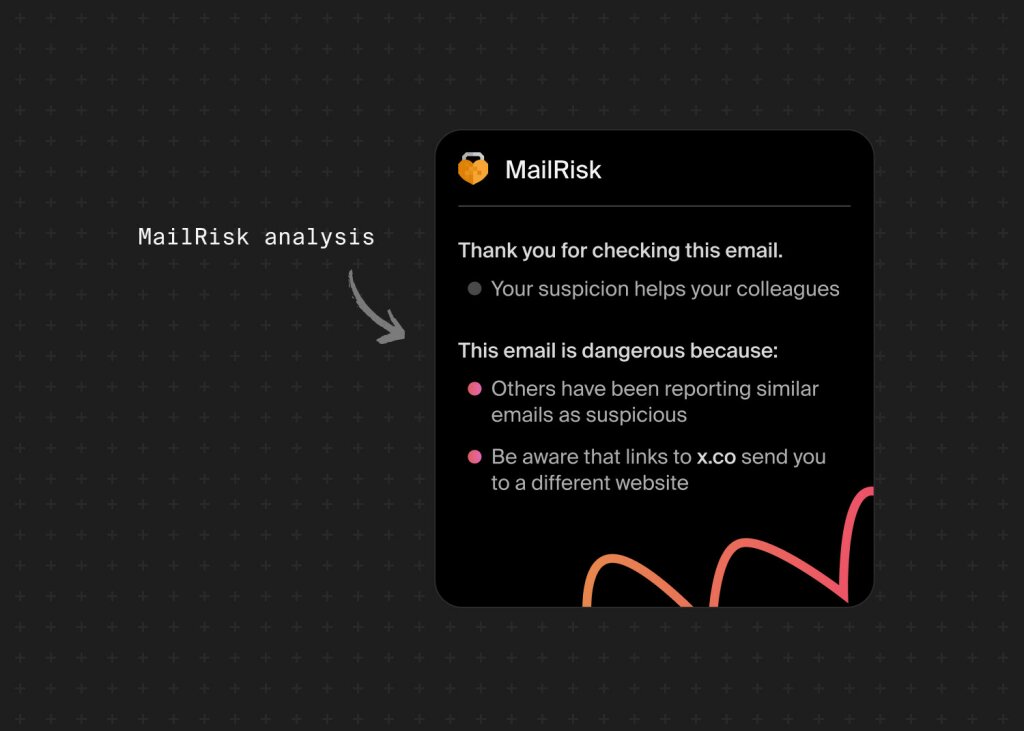“Required security training” might be the three most dreaded words in your colleagues' vocabulary. So when your carefully crafted security update lands in their inbox or a webinar invite pops up, they're already looking for the "mark as read" button.
Creating security awareness content can often feel like shouting into the void. But it doesn’t have to be that way.
Across industries, security professionals report that employees who found security training "very interesting" were over 13 times more likely to make fundamental changes in their security behavior compared to those who found it "boring".
This guide shares practical ways to transform your security content from something your colleagues actively avoid into resources they actually value—no marketing degree or design skills required.
You'll walk away with:
A better understanding of why people tune out security messages
Simple techniques that make your content more engaging
Interactive formats that work better than text-heavy documents
Six accessible tools that help create attention-grabbing content
These strategies are easy to apply—whether you use our ready-made content, create your own, or bring in other tools to enhance what you build in Secure Practice. They’re designed to help your message resonate and stay top of mind.
Developing a strong security culture is not a ‘one-and-done’ deal. It’s a continuous effort to ensure that everyone’s first response is the most secure one.
– John Scott, Certified Instructor at the SANS Institute
People don’t ignore security awareness content on purpose
We've all experienced the disappointment: staring at analytics showing only 12 people opened your carefully crafted security update, or watching colleagues’ eyes glaze over halfway through your training session.
Maybe you've tried everything: shorter emails, bolder subject lines, and making the warnings scarier or the policy consequences clearer. Yet somehow, crucial security information still gets ignored while cat videos get shared company-wide in minutes.
The truth is painfully simple: your security awareness content is competing for attention in an already overwhelming workday. And right now, it's losing.
Most people actually want to do the right thing, they just:
Don't have time for content that feels irrelevant ("That's not my department's problem")
Shut down when faced with technical jargon ("What the heck is a zero-day vulnerability?")
Can't remember complicated procedures when they're already juggling multiple priorities
Are dealing with technology changes that leave them feeling vulnerable
What makes security content engaging (and what kills interest fast)
Security content fails when it ignores how people actually process information. Neuroscience and behavioral research have identified critical engagement killers that doom even the most effective security messaging:
Death by wall of text: those lengthy policy documents that live in a SharePoint folder? The average employee spends seconds deciding whether content is worth reading—and dense text fails this test instantly.
The fear factor: scary headlines don't motivate—they paralyze. Research shows that fear-based security messaging actually increases cognitive load and reduces compliance.
The tech talk trap: using phrases like "multi-factor authentication protocols" when "extra login step" would work just fine. Industry terminology might make you sound knowledgeable, but it creates immediate distance with non-technical audiences.
What actually breaks through attention barriers is meeting people where they are, not just physically, but mentally.
Make it about their day, not your checklist
The fastest way to lose people is to make security all about compliance. If your message reads like a list of rules—or worse, a policy document—it’s game over.
Instead, frame security in a way that connects to their world. Ask questions that spark curiosity. Lead with a relatable moment or a surprising fact. Use short personal stories to create emotional relevance.
Use language that says “this helps you,” not “this checks a box.”
Imagine this landing in someone’s inbox:
Subject line: Here’s how to keep your personal photos private
Now compare it to:
Subject line: Reminder: Follow the data classification policy
Which one feels more relevant? More worth clicking?
The first one connects. It promises value in a way that feels personal and helpful—without leading with rules or requirements. That’s the kind of phrasing that earns attention in a crowded inbox.
Give your colleagues practical wins
People engage when they feel like they’re getting something useful right now. That means moving away from vague, abstract language and giving them clear, doable actions.
“Implement proper password hygiene” doesn’t mean much to someone who’s just trying to log in and get to their work. “This 30-second habit protects your banking details”—now you’ve got their attention.
This is why gamified e-learning works so well. Think bite-sized lessons, quick email nudges, or short videos that fit into the flow of the day and that your teams can apply immediately.
Byte-sized tip
Be thoughtful about timing. Monday mornings and Friday afternoons aren’t ideal moments to ask for attention. Respect your colleagues’ mental bandwidth—it shows you care.
Go where people already are
You could spend hours creating the perfect course—but if it lives on a forgotten SharePoint page, no one’s going to see it.
Don’t wait for people to come to your content. Bring your content to them.
That might mean sharing tips in Slack or Teams, adding reminders to newsletters, or embedding short videos in cybersecurity training tools or platforms they already use. If your company has digital signage or even a kitchen whiteboard—use it.
And yes, we love the story of the security awareness manager who put posters in bathroom stalls. Sounds odd? Maybe. But it worked, because they met people in the one place they couldn’t escape with their phones. Genius.
Content formats that invite interaction (and why that matters)
Once people are paying attention, your content has a real chance to make an impact. And impact requires both information and interaction.
When your colleagues click, vote, choose, or reflect on effective security messaging, they’re not just learning; they’re building habits and making connections that last.

Use these interactive formats to create moments of reflection and opportunities for people to connect the dots between abstract risks and real-life decisions:
Polls and surveys let people see how their peers think, which can normalize safe behaviors or spark curiosity about best practices.
Quizzes turn passive reading into active recall, which boosts memory. A quick “spot the phishing email” challenge is more likely to stick than a slide about red flags.
Choose-your-path stories give people agency. They let teams play out different responses and see consequences in a low-stakes environment.
Live cybersecurity exercises or simulations create shared experiences that become memorable learning moments—especially when followed up with group reflection or peer shoutouts.
These formats also give you something precious: feedback. You learn where people hesitate, what they misunderstand, and where your message needs to be clearer.
Build once, reuse often
Templates aren’t just about design—they’re a time-saver.
Many of our customers tell us they don’t have time to create security training content from scratch every month. That’s why they start with pre-built campaigns in the Secure Practice platform, then tweak and repurpose depending on who they’re targeting.
If you’re building your own security content library, keep a collection of your most successful formats. If your "What would you do?" emails get the most engagement, create templates you can adapt for different topics.
From frontline workers to executives, reaching more people doesn’t have to mean more work. Templates help you scale smart, not hard.
6 content tools to build and deliver learning that sticks
Creating effective security awareness content isn’t just about what you say—it’s also about how you say it. Relevance, clarity, visual appeal, and short formats are the key to making your message stick.
While many of our customers prefer using our ready-made surveys, courses, and bulletins (because they’re already designed to be engaging and clear), we know that sometimes you want to create your own.
We’ve compiled a list of security awareness content tools based on honest reviews and creative ideas from professionals—tools that are not only practical and affordable, but also effective in helping you create content that resonates.
Here are six community-recommended options to create effective security awareness content:
Visual tools to enhance clarity and attention
1. Canva: the go-to design tool for non-designers
Canva is a graphic design tool that makes it easy to create polished, on-brand visuals in minutes, whether you're building a phishing tip poster or a quick Slack card. With thousands of templates and an intuitive drag-and-drop editor, it’s perfect for those who need results fast, without a graphic designer.
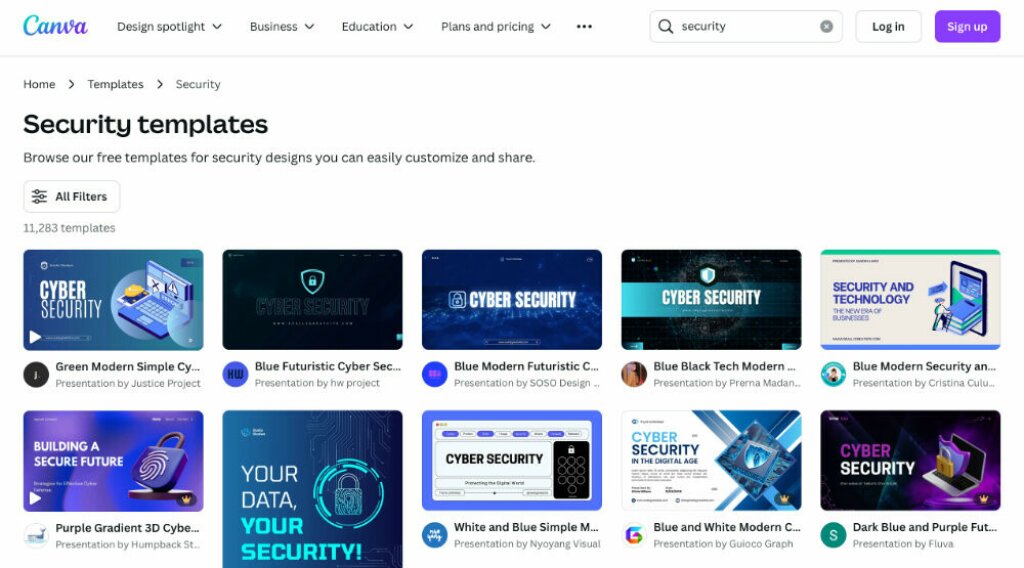
Perfect for: creating infographics, posters, or bite-sized tips that don't look like they came from 2005
Why it works: professional templates, drag-and-drop simplicity, and free for basic use
Creative use: design a series of "Security Minute" images for your Teams channels or bathroom stall campaigns
2. The Noun Project: icons that speak louder than words
The Noun Project is an icon library that offers a massive library of consistent, minimalist graphic elements you can use to explain complex security ideas visually. It’s ideal for breaking down language barriers or simplifying jargon-heavy topics like MFA, ransomware, or phishing in one glance.
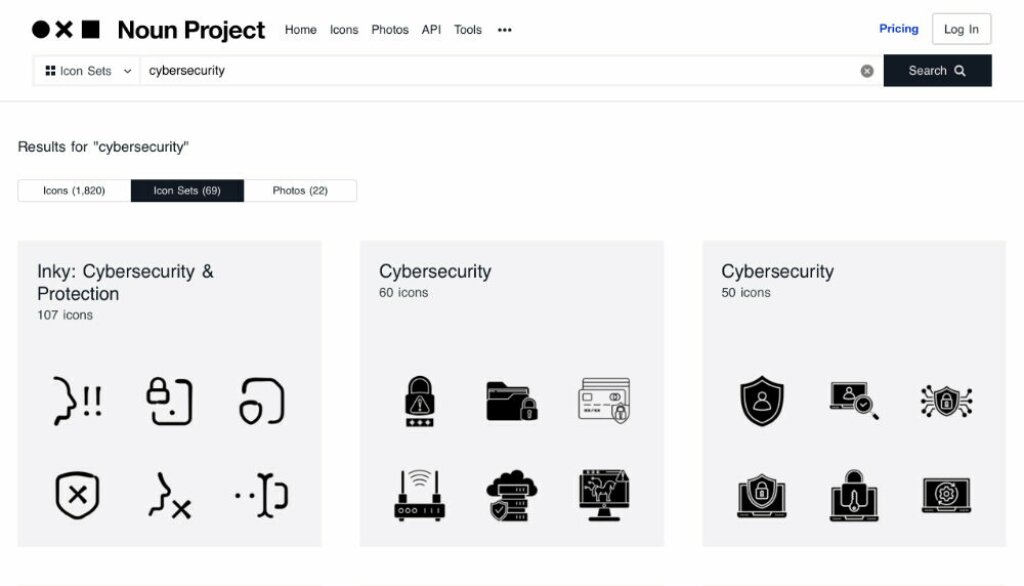
Perfect for: finding consistent icons that visually explain concepts without words
Why it works: helps create visual language that crosses language and technical knowledge barriers
Creative use: create a simple visual language for your cybersecurity communication tools—consistent icons for different threat types or required actions
3. LottieFiles: make your visuals move seamlessly
LottieFiles is an animation library and editor that helps you add lightweight, animated icons or elements that catch the eye without slowing things down. A little motion goes a long way in making your security emails or training slides feel modern and clickable.
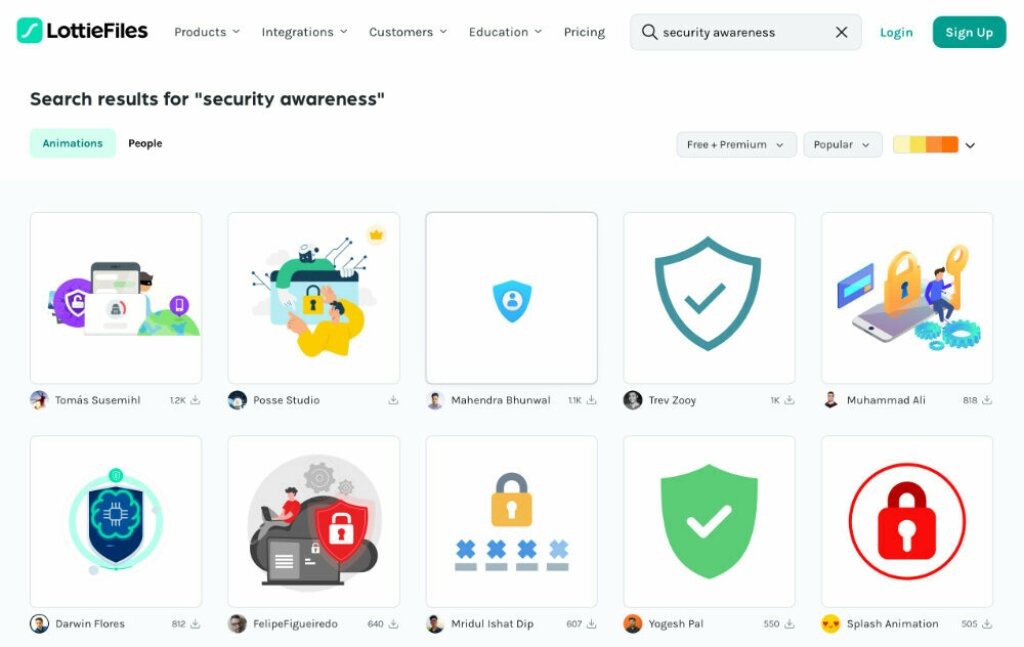
Perfect for: adding subtle animation that draws attention without being disruptive
Why it works: lightweight animations feel modern and grab attention in emails or intranet posts
Creative use: animate your most important call-to-action buttons in emails or training materials
Byte-sized tip
The more engaging your visuals and tone, the more attention your security content gets.
In the Secure Practice learning portal, you can try different looks and tones in your campaigns, then actually see what gets people's attention. No more guessing what works—the platform shows you which approaches your colleagues actually respond to, so you can measure and manage employee security engagement.
Video and multimedia tools to tell short, powerful stories
4. Colossyan: create professional explainer videos
Colossyan is an AI video creation tool that helps users create video messages. We always recommend recording your own videos when possible—real voices and faces go a long way in building trust. That said, if you’re on a tight deadline or need content in multiple languages fast, Colossyan is a solid option for creating polished, AI-powered explainers.
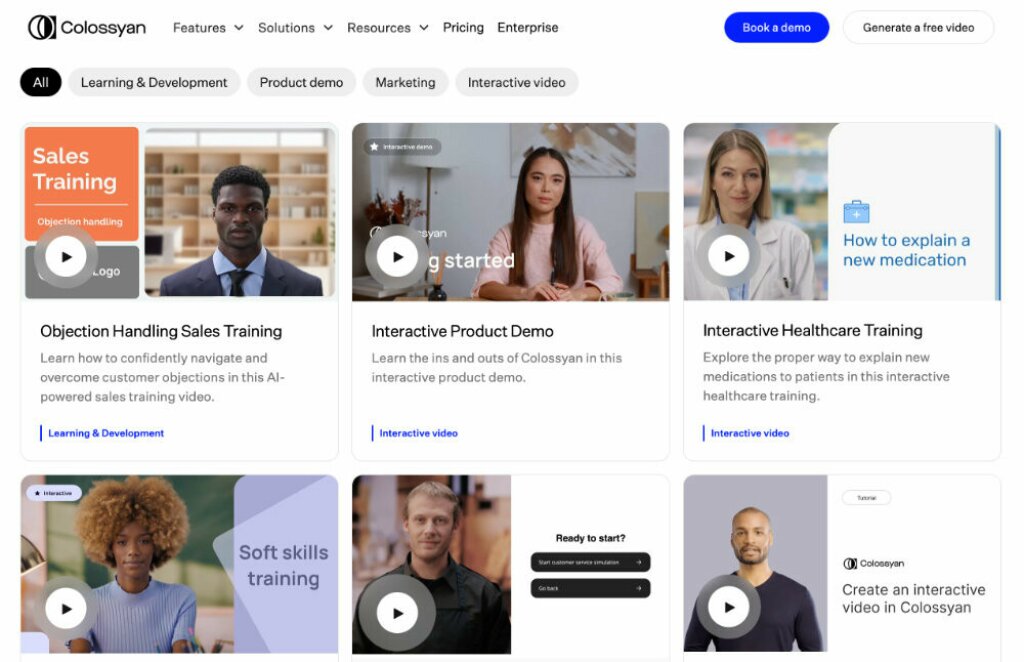
Perfect for: creating professional videos without cameras, studios, or editing skills
Why it works: turn text into video explainers with realistic avatars in multiple languages
Creative use: create personalized security updates from your CISO for different departments or regions
5. Lumen5: turn walls of text into short, punchy video stories
Lumen5 is an AI video repurposing tool that takes long content like blogs or newsletters and distills them into quick, scannable video clips. It’s great for turning updates or policies into engaging highlights your team will actually watch.
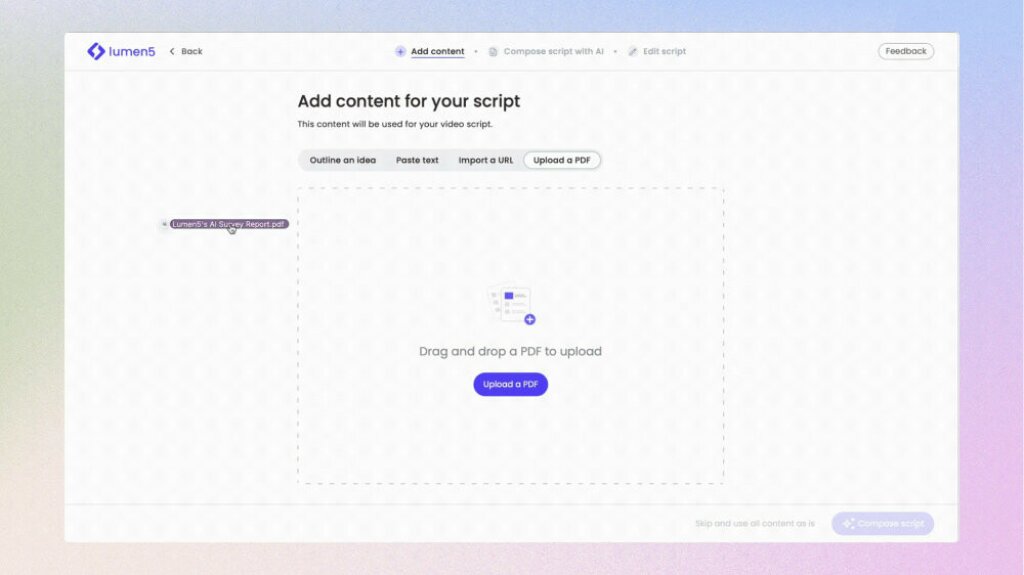
Perfect for: transforming text-heavy content into social media-style videos
Why it works: AI helps convert blog posts or policy documents into visual stories
Creative use: turn your monthly security newsletter into 60-second video highlights
6. Audionautix: set the right tone with music that’s free and legal
Audionautix is a royalty-free music library that helps you make even a basic explainer feel more polished and engaging. It gives you free tracks to use without worrying about licenses—perfect for creating a familiar sound identity across your awareness campaigns.
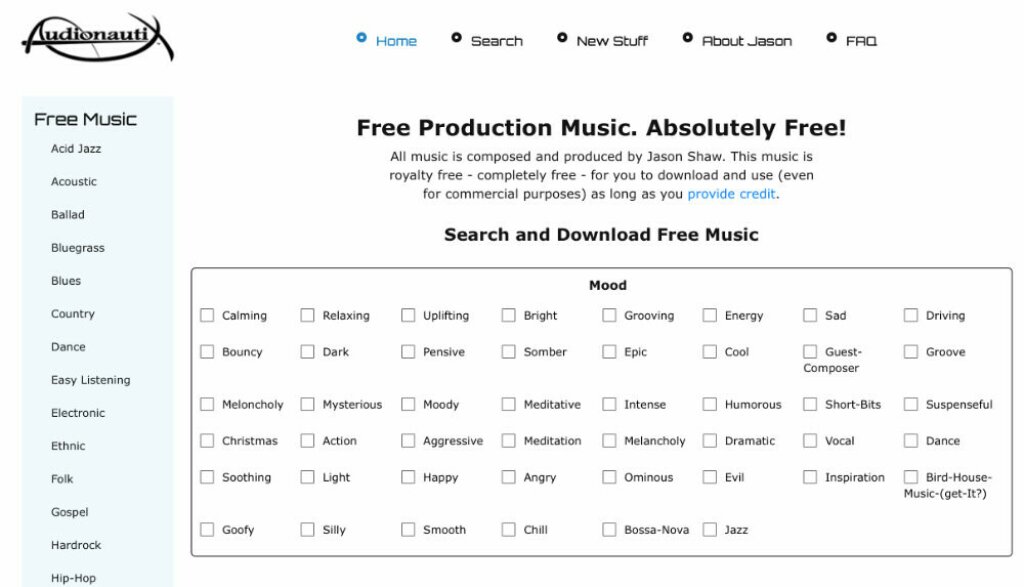
Perfect for: adding background music that sets the right emotional tone
Why it works: royalty-free music improves video quality without copyright concerns
Creative use: use consistent audio branding across your awareness program to build recognition
Videos can be security awareness gold—if people watch them.
Secure Practice makes it easy to drop your videos into training or email nudges, then shows you who's watching and who's skipping. This helps you figure out which security topics are connecting with your team and which ones need a different approach.
Security awareness content tools are great. But support makes the difference.
Security awareness doesn’t have to mean flawless content or big production budgets. What your colleagues really need is clear, human guidance—something they can relate to and act on.
We know many awareness professionals juggle this work alongside other responsibilities, often with limited time and resources. That’s why the right tools matter: they make it easier to create content that feels fresh, relevant, and easy to understand, even when you’re short on hours or help.
That said, it’s important to always review AI-generated content carefully. Even small inaccuracies or tone mismatches can affect trust, especially when communicating security-related updates.
Tools can be useful in a pinch, but we recommend using them as a starting point—not a finished product. The real impact comes when you match those tools with empathy for your audience. What do they actually need to stay secure? Where are they most likely to get stuck? Start there.
And remember, you don’t need to do it all at once. One small win is enough to move things forward:
Share a single visual tip that sticks
Write one email that invites reflection, not just compliance
Create a short video that connects security to everyday moments
Because the goal of security awareness content isn’t perfection—it’s attention and trust.
The Secure Practice platform was built for people like you
Whether you use our ready-made security awareness content or build your own, we make it easier to deliver training that actually works.


